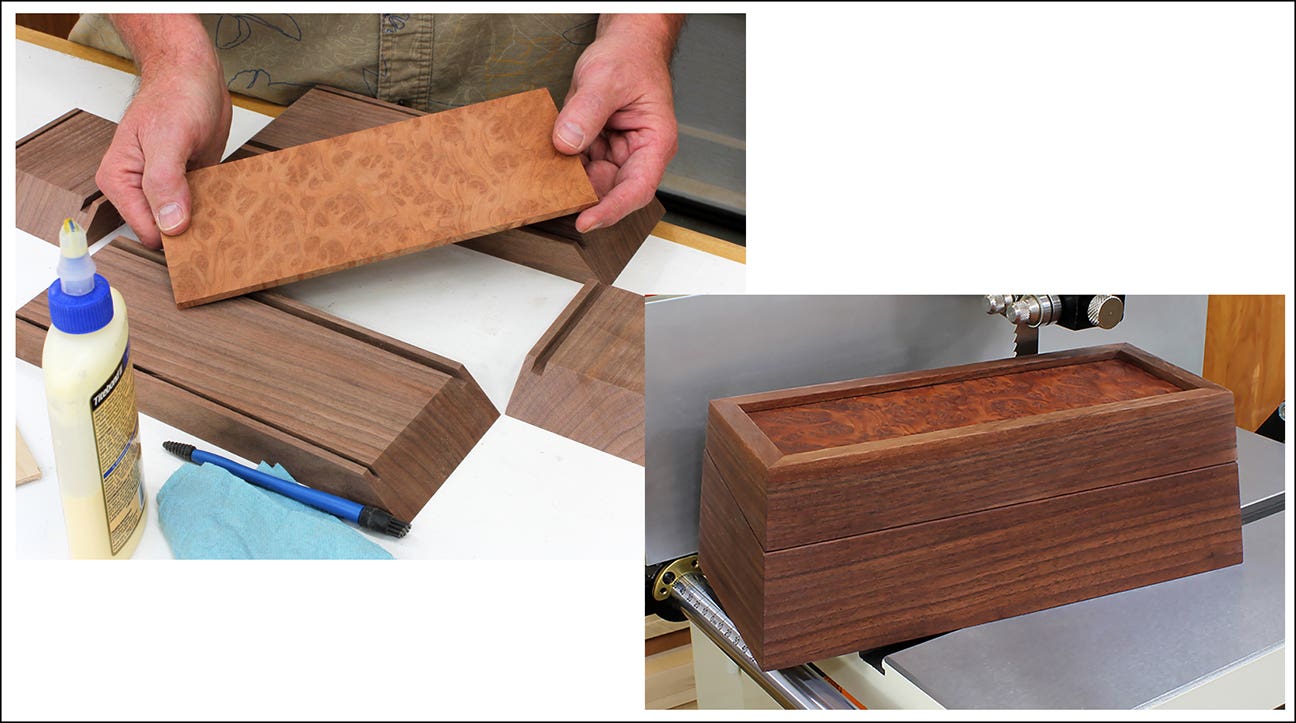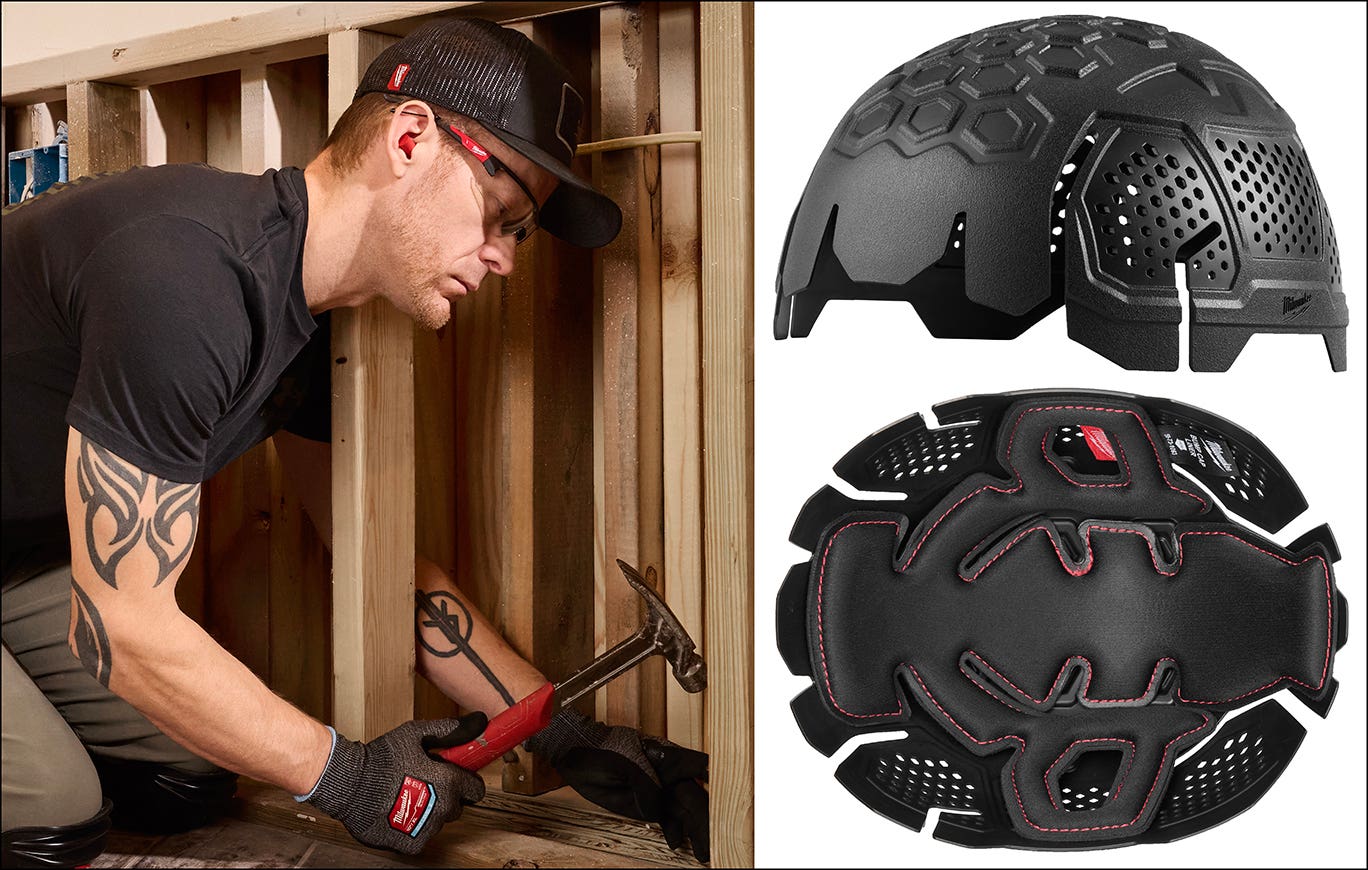How to finish your Simple Chair
Two layers of 3/4″ Baltic birch plywood can be used for the bending jig’s base, vertical fins, cauls, clamp seats and concave bending surfaces. The caul softeners are scraps of…
Two layers of 3/4" Baltic birch plywood can be used for the bending jig’s base, vertical fins, cauls, clamp seats and concave bending surfaces. The caul softeners are scraps of dense, plush carpet wrapped around the caul’s face, stapled to its cheeks, and protected from squeeze-out with high-quality duct tape.
The difficulty of clamping inside curves isn’t so much a matter of applying great force as it is applying that force uniformly. Segmented cauls joined by the carpet that softens them work. Clamping an inside curve that twists presents a devilish challenge: aligning the clamping force with a shape that won’t squish sideways off the veneer stack that, of course, wants to spring back out of the recess. Think incremental gains with temporary, intermediate steps to achieve the final clamping positions.
Concave veneer mating surfaces must be rock-solid and smooth. Beyond them, typically fastened to the underside of the base, you’ll need another set of correctly positioned and angled clamp seats in opposition to those on the cauls. Concave bends usually clamp with one or two 8" C-clamps. The requirements of concave bends suggest orienting them as close to and as squarely facing the jig’s base as possible.
Out on the relatively airy convex surfaces though, most clamping is done with crisscrossed bands, 5/8" wide, cut from a truck tire inner tube.
Be aware
There is no lateral forgiveness of an inaccurate fit between the veneer and bending jig. The veneer must lie down like a ribbon. You can’t assess the fit without securely clamping the veneer at the center and working toward the ends.
Consider these facts as you begin to prepare the veneers: scarf joints are less flexible than the material they join. When they coincide, they make kinks or dead spots in a bend, but that’s easy to avoid. In a symmetrical lamination, locate the scarf on one side of the pattern a couple of inches offset from the location on the other side, and then flop every other veneer assembly. This strategy also halves and equalizes whatever errors have crept into the machining. In an asymmetrical lamination, relocate half the scarfs and interleave the two patterns.
Dead spots and kinks can spring from other causes, too. Thick spots are formed if the veneer carrier’s top plate deflects. Solutions might include a more rigid top plate, sharper abrasives, slower feed rate, placing the shim packs and crosspieces closer together, and spacing the crosspieces on one side of a symmetrical shape intermediate to their positions on the other side, then flopping half the assemblies in the stack.
Double-sided (2-S) tape works its own mischief in thin laminations. I chose tape with relatively thin mastic and low tack. Still, it is .007" thick and induces .007" deep valleys during the grind of these thin veneers. The mastic is still grippy enough that veneers sometimes break when prying them loose if the tape coverage is more than 10 percent.
The solution to that situation is to use 1/11th coverage and advance the site of the tape for each veneer so the valleys end up uniformly scattered throughout the lamination.
Before mixing the glue, do a thorough dry run. Begin by arranging the veneer assemblies to minimize problems and boldly mark the outside edge of the stack. Drill an indexing pin hole in the waste at the center of the stack. Install a small nail. Wrap the stack tightly in a double layer of stretch wrap. This makes the stack easy to handle and helps contain squeeze-out during the actual glue-up. Start clamping at the center and work toward the ends. When the dry run seems successful, slice away the stretch wrap to verify an intimate fit between the bending jig and the stack of veneers.
Once again, there is no lateral forgiveness of an inaccurate fit between the bending jig and veneer. To ignore this warning will certainly result in one or more of the following: wavy glue lines, undulating surfaces, voids, crumpled veneers, kinks, bulges and, if you are really persistent, fractures where the veneer pulls apart.
Bondo to the rescue
To modify the veneer pattern, make slight changes to the lateral angles of the scarfs or the distance between them. If the bad fit is in the jig, grind away the lumps and reinforce the fix. If the problem is a thin black line between the veneer stack and the bending jig’s contact surface, fill the low area with that bungler’s buddy, Bondo. If you can, use a scale to determine the proportional mix of resin to hardener. Bondo cures in minutes, can be carved when half-cured, and sands easily when hard.
Make two more veneer assemblies than your design calls for, one to ruin, the other, hopefully, to hang on the wall and think about.
Many laminators like Unibond 8000 for their adhesive. It resists cold creep, is tintable, fairly inexpensive, and allows 30 to 45 minutes working time. If that was enough time, I’d try it.
Instead, I use West Systems epoxy, 105 resin with either 206 or 209 hardener. It’s more expensive, but 206 allows almost 2 hours, and 209 three to four hours working time, even in hot weather. It is tintable, doesn’t cold-creep, and doesn’t soften when, for instance, it is heated by the sun.
Use the chosen material to prime the veneers in a thin coat. When it is as tacky as masking tape, recoat, work off the excess and build the stack around the witness marks and indexing nail. Wrap it with a double coverage of stretch wrap and set the clamps. When leftover droplets no longer dent with thumbnail pressure, release the clamps and take delight in the absence of springback.
Trimming and sculpting
A saw with a reciprocating action and my preference — a rotary file from Creative Technologies in a die grinder — can be used for a rough trim of the lamination.
Cutting the mortises for the splats and rear legs is precise and controllable with a hollow chisel mortiser.
I know of no better leg-to-seat joint than the one Sam Maloof often explains. His son, Slimen, claims its invention. It is router cut with matching bits, but is limited to flat surfaces intersecting at 90 degrees. I apply stacks of 1/16" veneers about 10" long to the bend’s joint area using 1/4" Baltic birch plywood for cauls on the bending, twisting surface. I establish flats with a sled on the table saw, cut the joints, and then sculpt the surrounding surface.
There’s a high percentage of epoxy in a lamination of thin veneers and each glue line is peppered with the shards of fractured abrasives. I quickly abandoned hope of a spoke-shaved surface. Rasps, files and coarse abrasives are much more expeditious. Recently, a Dynabrade rolling pin sander has proven to be a good value and a pleasure to use in fairing the curves of the lamination.
Mark Koons operates a one-man shop in Wheatland, Wyo. He offers instruction in complex bent and end-grain laminations. For information, visit www.markkoons.com.
This article originally appeared in the February 2009 issue.






